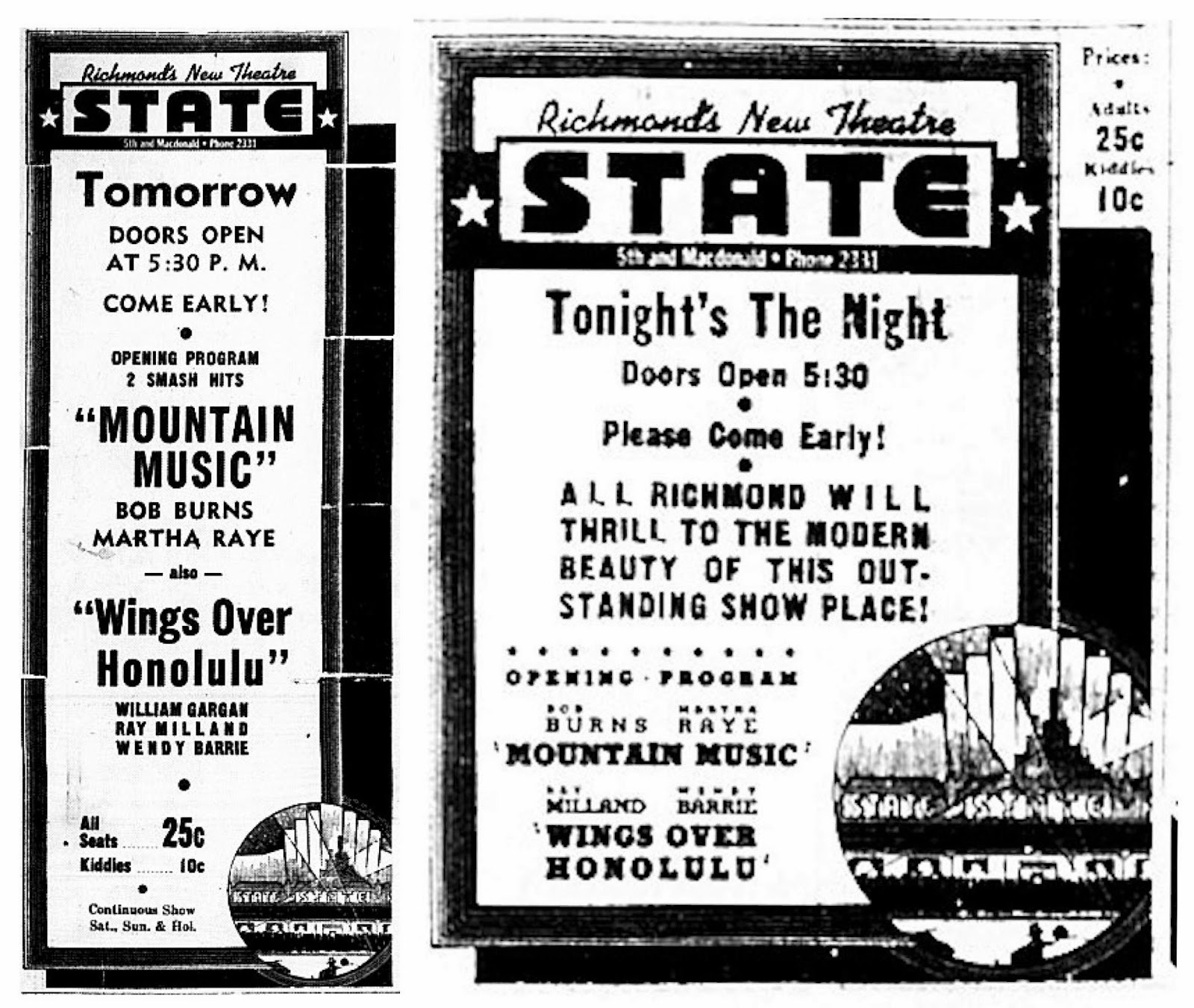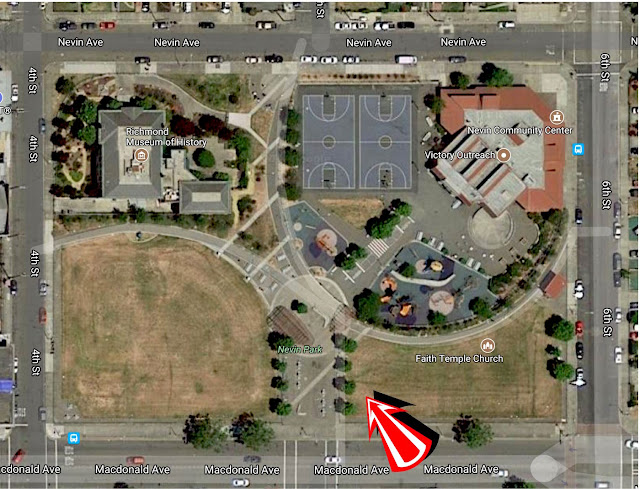Richmond, California, the community I grew up in, is in western Contra Costa County in the eastern region of the San Francisco Bay Area, 16 road miles from San Francisco and just across the bay by water. As of the 2010 U.S. Census the city's population was 103,701. Richmond was incorporated in 1905 but remained a relatively sleepy city until the beginning of World War II. At the outset of the war the Richmond Shipyards were constructed along the Richmond waterfront to build the Liberty (cargo) ships, 747 of them in fact, more of them than at any other site in the country. To build the ships workers were recruited from all over the United States. Those shipyard workers as well as other wartime industry and newly required service industry employees more than quadrupled Richmond's population, peaking out at around 120,000 by the end of the war. Once the war ended the shipyard workers were no longer needed and so began an inevitable population decline. The Census listed 99,545 residents in 1950 and only about 70,000 by 1960. (Information here compiled from from Wikipedia)
Richmond in the early 1920's looking east from 5th and Macdonald. Part of the Richmond Theatre (later the State) built in 1913 can be seen at far left. Not visible here but three blocks down the street Richmond's biggest theatre the T & D (later the California, Fox and United Artists) is either under construction or has recently opened.
Looking west on Macdonald Avenue from 11th Street in 1929. The building on the far right is the 1923 Winters Building which housed retail establishments on the ground floor and a ballroom above. It's one of the few buildings still standing in downtown Richmond, has been nicely restored and now houses the East Bay Center for the Performing Arts. A bit over two blocks down Macdonald (the furthest high structure clearly visible on the right) stands the California Theatre (formerly the T &D, later the California, Fox and United Artists). Photo from the Jack Tillmany Collection, used with permission.
Looking west from 10th street at an extremely crowded Macdonald Avenue during the World War II years.
Looking west from 9th Street on Macdonald Avenue later in the 1940's. Vehicle congestion had somewhat been relieved by removal of the streetcar tracks and the institution of parallel parking.
Movie page of the Richmond Independent from January 1, 1942. At the beginning of America's involvement in World War II the only two operating movie theaters in the city of Richmond, both of them on Macdonald Avenue downtown, were the State (formerly the Richmond), built in 1913 and the Fox (formerly the T & D and California), built in 1922. The Cerrito in neighboring El Cerrito, built in 1937 was also open and advertised in the Richmond Independent along with the Fox and State. The Point in Point Richmond was apparently closed or not advertising in the Independent at the time.
What a difference a less than two years makes! By fall of 1943 the Friday or Saturday movie page of the Independent could take up the better part of two full pages and there were still three theaters to make their appearance before the end of the war and start advertising in the paper. Those upcoming theaters would be the Vista in El Cerrito, opening in December 1943 and the Costa (later Fox) and Uptown on MacDonald Avenue in Richmond, opening respectively in January and December of 1944.
By the end of World War II (1945) there were eight theaters on MacDonald Avenue alone, another one on 23rd Street and Rheem Avenue and another on San Pablo Avenue in San Pablo. Additionally the old Point Theatre in Point Richmond, built in 1913 but apparently closed sometime before the war, was once again operating, remodeled and with a new name, the "V" (for Victory). El Cerrito also had a second movie house, the Vista.
Macdonald Avenue around 1950. Only the Fox Theatre (soon to become the United Artists) is visible in the far right side. Even though the war had been over for several years downtown Richmond was still a thriving area of commerce with department stores, all sorts of specialty stores, restaurants and of course several movie theaters. People still went downtown to do business, shop, eat and go to the movies, just as they did in almost every large and small community in the country.
It was inevitable that with the end of the wartime boom economy and the resulting decrease in Richmond's population not all of the theaters that sprung up on MacDonald Avenue and elsewhere in the area during the war would survive in a now depressed economy. Starting in 1949 many of those still relatively new theaters began to fall by the wayside one by one. Ironically the first to go in the spring of 1949 was the Liberty, named for the ships that were built in Richmond and in the main part responsible for Richmond's population explosion. The State followed in the early 1950's, followed soon by the Studio and Times and finally the Uptown in 1956. In addition by 1957 the Grand on 23rd street, the Pablo in San Pablo and the Vista in El Cerrito would all be shuttered for good.
By July 22, 1953 there were only four theaters (the UA, Fox, Rio and Uptown) on Macdonald Avenue, half of what there were a few years earlier at the wartime peak. The Grand was also still open to dwindling business on 23rd Street. San Pablo's Rancho Drive-In would get some major competition a week later when the more modern San Pablo Auto Movie opened on July 29. Other theaters advertising in the Richmond Independent on this date were the Cerrito, Vista and El Cerrito Auto Movies in El Cerrito, the Park in El Sobrante, the Albany in Albany and the soon to be closed Lanai in Crockett.
Macdonald Avenue looking east from Sixth Street in 1954. The Fox and the UA, downtown Richmond's two remaining first run movie theaters can be seen just down the street in the 700 and 800 blocks of Macdonald. Photo from the Jack Tillmany Collection, used with permission.
This is a cropped area from the 1954 photo above this one showing much more detail. The Fox is showing a reissue of the very popular 1948 John Wayne western "Red River" while the the UA's main attraction is 1954's "Men of the Fighting Lady" with Van Johnson. Photo from the Jack Tillmany Collection, used with permission.
By 1957 Macdonald Avenue which had eight theaters a decade earlier had only three remaining, the first run Fox (formerly Costa) and United Artists/UA (formerly T & D, California and Fox) and the last of the low priced grindhouses, the Rio. The United Artists closed it's doors for good in the fall of 1959 while the Fox hung on until the spring of 1965 before dwindling business in an increasingly depressed and at times dangerous downtown area forced it to turn off the lights on mainstream films permanently. Ironically the Rio, generally considered the worst theatre in town and a place to be avoided outlasted all of the other nicer theaters on Macdonald Avenue and continued showing second run films for yet a few more years. Then it too finally closed and became a church. That in a nutshell is what happened to the mostly now forgotten Richmond movie theaters. You can read more about each individual theater in it's separate blog post.
Night view of Macdonald Avenue late 1959. On the right the recently closed United Artists (UA) Theatre has shown it's last film and will soon be turned into a Woolworth's variety store. On the left in the next block the Fox is still lit up and will be showing films to a dwindling audience for the next few years. Three blocks further down on the left (not visible in this picture) the rundown Rio is still grinding out last run films for cheap prices and will outlast even the Fox as the last movie theater standing and operating on Macdonald! This photo appears in the excellent Images of America book "Richmond" by Donald Bastin
Movie page from the Richmond Independent from October 1959. The United Aritsts' recent closing leaves only the Fox in downtown Richmond, along with El Sobrante's Park, El Cerrito's Cerrito and two drive-ins in San Pablo advertising in the Independent. The Rio on Macdonald Avenue was also still open but apparently had ceased newspaper advertising at this time.
Movie pages from the Richmond Independent from (left) July 1, 1962 and
(right) May 1, 1970. Note that by 1970 the San Pablo Auto Movie had
closed, Syufy now controlled both remaining drive-ins and the Fox after
being closed since 1965 had temporarily reopened and was now showing adult
films, most likely the only recently tolerated hardcore variety. The Rio
Theatre at the top right side of the 1970 page (showing "Pyscho") is not the Macdonald
Avenue flea pit but rather the Rio in Rodeo, about 8 miles from
Richmond.
As for the very few new theaters built and opened in the greater Richmond area since the 1950's you can see posts later in this blog about the third drive-in which opened in the early 1960's, a couple of small two screen theaters in San Pablo and El Cerrito and a four and later eight screen multiplex in the Hilltop Mall Shopping Center. All of these post 1950's theaters have long since been closed and demolished. There is however a happy ending for a 1937 constructed but decades closed theater in El Cerrito, now open again and serving pizza and beer with the flicks.
The population of Richmond itself has rebounded over the years, now back up around 100,000 but the city is currently severely under served in the movie theater department with only one mainstream multiplex, the big box styled Century 16 near Hilltop Mall which opened in 2001. In addition an intimate 40 seat screening room called The Magick Lantern opened in early 2013 in Point Richmond, specializing in independent and foreign films. Unfortunately that most welcome venue only lasted a year.
I hope you'll find something of interest in the information I've gathered on the individual theaters which are posted below in chronological order based on opening dates. Corrections and comments and remembrances are always welcome. Thanks for reading!































































